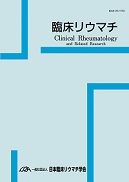Volume 30, Issue 4
Displaying 1-9 of 9 articles from this issue
- |<
- <
- 1
- >
- >|
-
2018 Volume 30 Issue 4 Pages 253-254
Published: December 30, 2018
Released on J-STAGE: July 03, 2019
Download PDF (717K)
-
2018 Volume 30 Issue 4 Pages 255-261
Published: December 30, 2018
Released on J-STAGE: July 03, 2019
Download PDF (745K)
-
2018 Volume 30 Issue 4 Pages 262-268
Published: December 30, 2018
Released on J-STAGE: July 03, 2019
Download PDF (7428K) -
2018 Volume 30 Issue 4 Pages 269-275
Published: December 30, 2018
Released on J-STAGE: July 03, 2019
Download PDF (873K) -
2018 Volume 30 Issue 4 Pages 276-283
Published: December 30, 2018
Released on J-STAGE: July 03, 2019
Download PDF (3494K)
-
2018 Volume 30 Issue 4 Pages 284-287
Published: December 30, 2018
Released on J-STAGE: July 03, 2019
Download PDF (2251K) -
2018 Volume 30 Issue 4 Pages 288-292
Published: December 30, 2018
Released on J-STAGE: July 03, 2019
Download PDF (2245K) -
2018 Volume 30 Issue 4 Pages 293-299
Published: December 30, 2018
Released on J-STAGE: July 03, 2019
Download PDF (910K)
-
2018 Volume 30 Issue 4 Pages 300-307
Published: December 30, 2018
Released on J-STAGE: July 03, 2019
Download PDF (869K)
- |<
- <
- 1
- >
- >|
